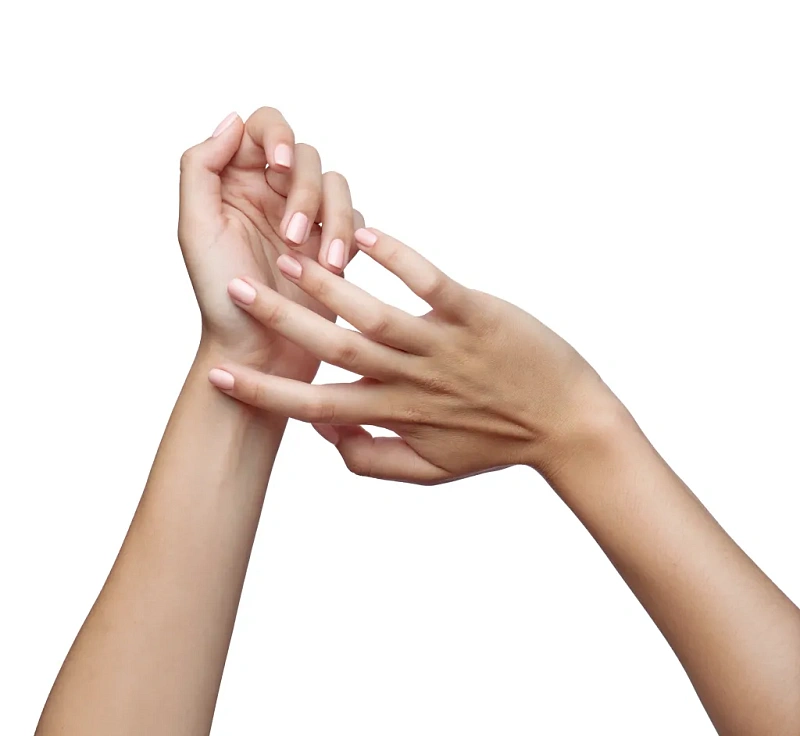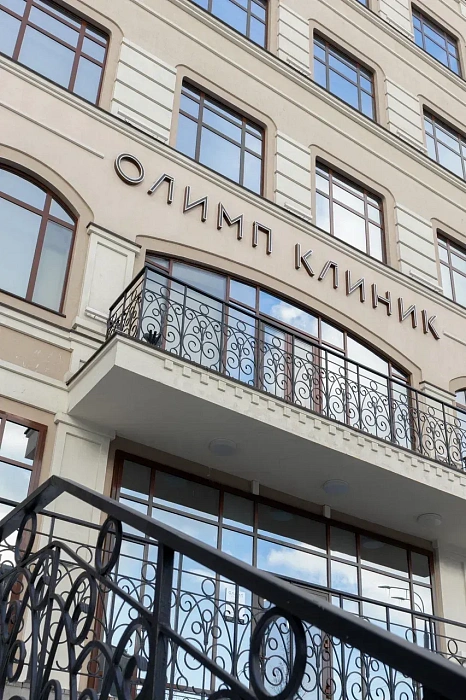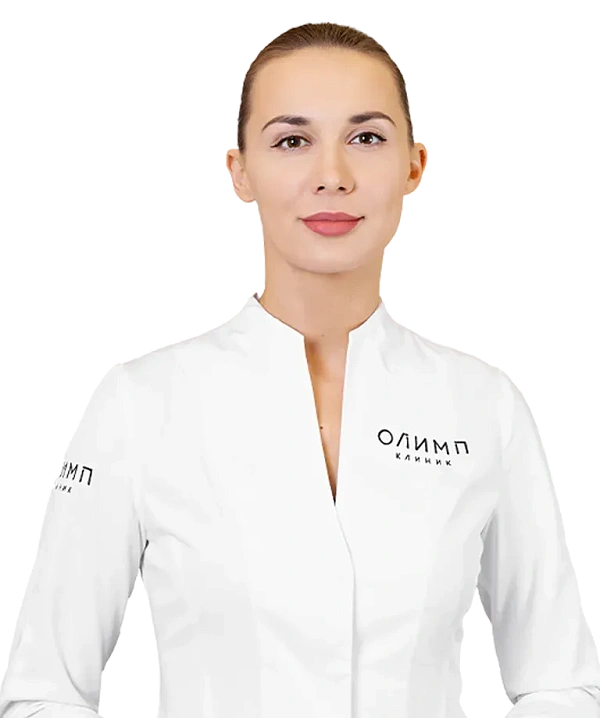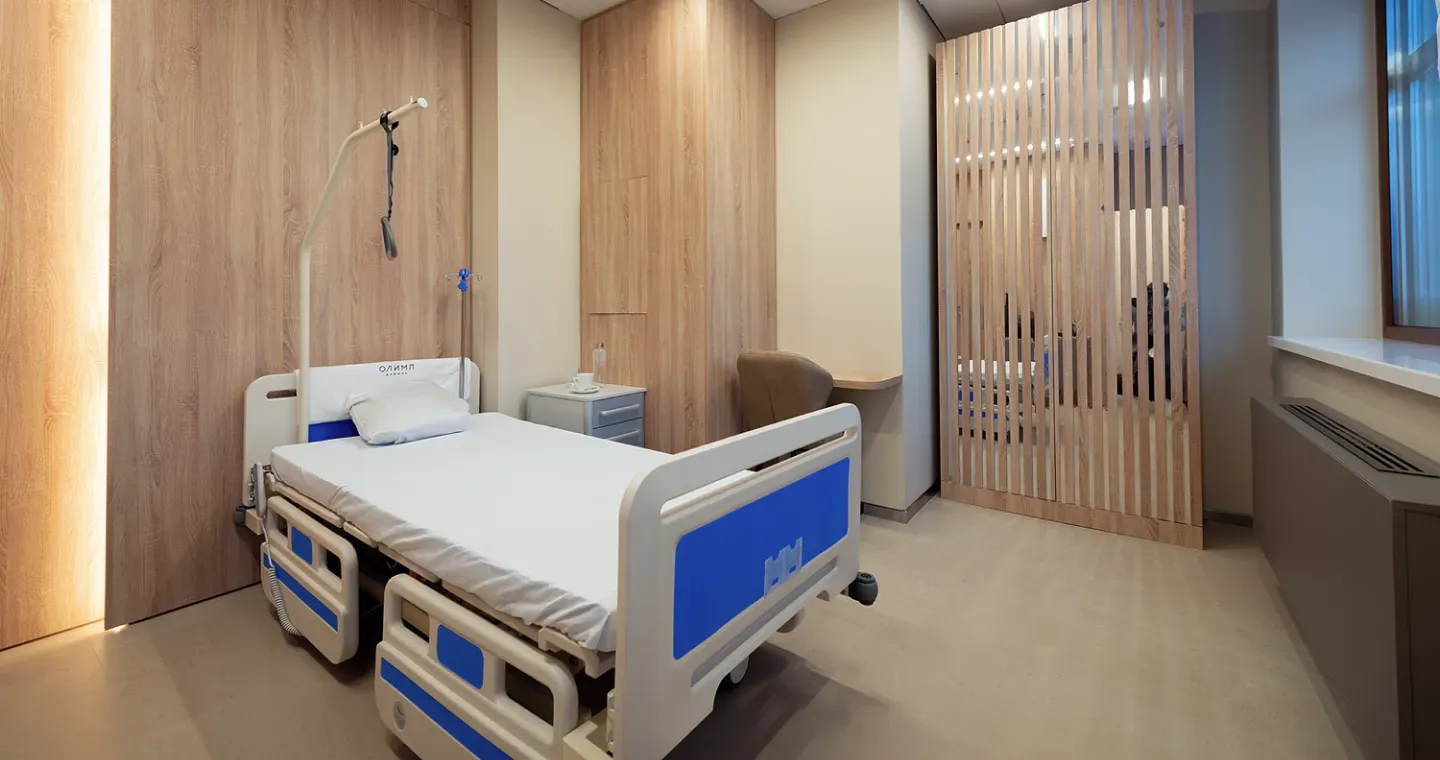Arthroscopic revision of the cystic joint
The condition of the wrist joints determines the functioning of the hand. Arthroscopic revision is a minimally invasive diagnostic procedure that assesses the condition of the joint tissues, which is necessary for planning subsequent treatment.

The wrist joint is prone to numerous injuries and diseases, including arthritis, ligament injuries and cartilage abnormalities. Arthroscopic revision allows the internal structures of the joint to be visualised and therapeutic manipulations to be performed through small incisions.
The advantages of arthroscopic revision are minimal trauma, short rehabilitation period and low risk of complications. The procedure allows the patient to quickly return to normal life and prevent the development of chronic problems. The procedure is effective in treating a wide range of conditions such as ligament tears, inflammation and degenerative changes. Arthroscopy is also used to remove loose masses, cartilage debris and treat other intra-articular pathologies.
Complete blood count and urine test X-ray of the wrist joint MRI or CT scan for detailed assessment Consultation with a general practitioner and anaesthesiologist
Through several small punctures, the doctor inserts surgical instruments and an arthroscope - a miniature camera. After diagnosing the condition of the joint and identifying the damage, the surgeon can perform therapeutic manipulations: remove damaged tissues, perform joint repair, sanitation and other interventions.
An arthroscope with a camera that displays the joint. Micro instruments for precise manipulations X-ray equipment
After surgery, you may experience pain and swelling in the wrist. You will be prescribed analgesics and possibly anti-inflammatory drugs. A rehabilitation therapist will prescribe a set of procedures to restore joint and muscle function. This may include physiotherapy and exercise therapy.
Benefits
Minimal invasiveness
The operation does not leave large surgical incisions and minimizes trauma to surrounding tissues.
Fast recovery
Patients can recover from arthroscopic revision of the wrist joint faster than from more traditional surgical interventions.
Lower risk of complications
Modern equipment that minimizes tissue injury.
Consultation
The doctor will conduct a detailed examination of your brush, take an anamnesis (medical history) and ask you about the symptoms and problems associated with the brush. To more accurately determine the problem, various diagnostic tests may be required, such as X-rays, MRI, ultrasound.

Operation
The surgeon makes small incisions in the skin, through which he inserts an arthroscope - a miniature camera. With the help of an arthroscope, the surgeon has the opportunity to assess the condition of the hand and, if necessary, perform surgical manipulations. During arthroscopy, the surgeon can eliminate the damaged tissue, repair the joint.

Rehabilitation
Pain and swelling are a normal reaction to the intervention. The doctor will prescribe you analgesics and possibly anti-inflammatory drugs. Physical therapy is an important part of rehabilitation after arthroscopic revision of the wrist joint to restore mobility, strength and functionality of the hand.

Specialists
Find a SpecialistPlastic Surgeon
Indications and contraindications
Indications
The consequences of injuries
Fractures of the bones of the wrist
Violation of the function of the wrist
Violation of the bending and extending function of the wrist
Performance of arthrodesis
Joint operation
Violation of stabilization of the bones of the wrist
Violation of alignment of the bones of the wrist between each other in one row
Soft tissue injuries
Damage to soft tissue structures
Damage to the borders of the wrist joint
Pain, swelling and restriction of arbitrary movements in the damaged area
Expected effect
Restoring mobility
Surgery can help restore the mobility of the hand and joint, which is especially important for patients suffering from diseases or injuries of the hand.
Improving the quality of life
Arthroscopic revision can help reduce pain and improve the functionality of the brush.
Diagnosis and assessment of damage
Arthroscopy allows doctors to visualize the structures of the wrist joint, such as articular surfaces, ligaments, cartilage and tendons. This helps in accurate diagnosis and assessment of the nature of damage.
Solving problems after previous operations
Arthroscopic revision can be performed to correct and eliminate problems that have arisen after previous surgical interventions in the wrist joint.
Similar referral activities
Arthrodesis of the joints of the fingers of the hand
The destruction of the joints of the fingers of the hand is accompanied by pronounced pain and impaired functions. Arthrodesis is a surgical intervention in which the affected joint is completely immobilized, which relieves pain and progression of inflammation.
Osteosynthesis of the bones of the fingers of the hand
The osteosynthesis of the bones of the fingers of the hand due to the comparison and fixation of the ends of the fragments ensures rapid rehabilitation and proper fusion.
Osteosynthesis of the bone of the wrist
The pathologies of the wrist joint are engaged in pathologies of the wrist joint. With damage to the bones, it will perform the osteosynthesis procedure.
Остеосинтез кости запястья
Патологиями области лучезапястного сустава занимается кистевой хирург. При поражении костей запясться он выполнит процедуру остеосинтеза.
Admission of an orthopedic traumatologist
Assessment and diagnosis of diseases of the musculoskeletal system. An orthopedic traumatologist conducts an examination, evaluates the functionality of the musculoskeletal system, prescribes the necessary studies and develops a treatment or rehabilitation plan.
Anterior cruciate ligament
The rupture of the anterior cruciate ligament is an injury that significantly reduces the quality of life. To preserve the functions of the knee joint, restoration of the integrity of the ligament is important. For this, an arthroscopic operation is performed.
How to reach
How to get
From the Belorusskaya metro station of the Zamoskvoretskaya line - exit 4 After exiting the subway, walk through the pedestrian tunnel and climb the stairs. Move towards the railway tracks, go down the stairs immediately after them and walk along the house, then turn right onto 1st Yamskoye Pole Street. At the turn to 3rd Yamsky Pole Street, cross the road at the pedestrian crossing and continue along 1st Yamsky Field Street, after a few buildings on the left you will see Olympus Clinic MARS.
Travel time
9 minutes
Landmark
Olympus Clinic MARS sign
How to get
From the Belorusskaya metro station of the Ring line - exit 2. After exiting the subway, turn left and walk to the pedestrian crossing. Cross the road through two pedestrian crossings and move along the Tverskoy overpass. Go down the stairs immediately after the railway tracks, walk along the house, then turn right onto 1st Yamskoye Pole Street. At the turn to 3rd Yamsky Pole Street, cross the road at the pedestrian crossing and continue along 1st Yamsky Field Street, after a few buildings on the left you will see Olympus Clinic MARS
Travel time
11 minutes
Landmark
Olympus Clinic MARS sign
From the metro station "Tsvetnoy Bulvar"
1 exit to the city, then left to the Garden Ring, at the crossing to the right, crossing the boulevard, one more crossing and at the traffic light to the left. The Olymp Clinic building is located overlooking the Garden Ring to the right of the crossing. Travel time is approximately 9 minutes. Landmark - sign Olymp Clini
From the metro station "Sukharevskaya"
Exit 3 from the metro and 640 meters straight ahead, the clinic will be on the right. Landmark - sign Olymp Clinic
Parking lot map
Exit 3 from the metro and 640 meters straight ahead, the clinic will be on the right. Landmark - sign Olymp Clinic

From Sokol metro station
The last car from the center: follow the signs for Exit 5. From the glass doors to the right and go to the end of the passage. Exit to the city by the steps to the left. After exiting the crossing to the street, go straight along Leningradsky Prospekt to the intersection with Chapaevsky Lane. Next, turn right (onto Chapaevsky Lane) and walk to the Triumph Palace residential complex. Entrance to the territory: through checkpoint No. 1, opposite the Vkusville store, you will need to present your passport. After passing through the checkpoint, go up the stairs to the fountain, opposite it you will see our clinic.
Travel time
10-12 minutes
From the Airport metro station
The first car from the center: follow the Exit 2-3 signs. Turn left out of the glass doors and walk to the end of the passage. After exiting the crossing to the street, go straight along Leningradsky Prospekt to the intersection with Chapaevsky Lane. Next, turn left (onto Chapaevsky Lane) and walk to the Triumph Palace residential complex. Entrance to the territory: through checkpoint No. 1, opposite the Vkusville store, you will need to present your passport. After passing through the checkpoint, go up the stairs to the fountain, opposite it you will see our clinic.
Travel time
12-15 minutes
How to get
Entry to the territory is prohibited, but there are free city parking lots around the Triumph Palace residential complex, where you can easily find a place for your car. Free parking area:





